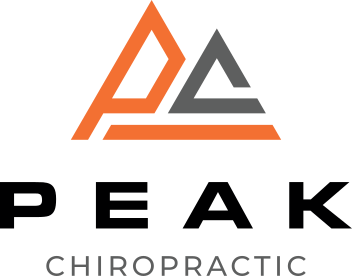If you're struggling with back pain, you might be surprised to learn how simple adjustments can make a significant difference. By focusing on aspects like posture, core strength, and even your workspace, you can create a more supportive environment for your spine. Techniques ranging from chiropractic care to effective stretching routines can lead to lasting relief. However, it's crucial to understand that not all methods are created equal. What's the most effective adjustment for your specific needs? Let's explore the ten best ways to find out how you can alleviate that discomfort.
Improve Your Posture
Improving your posture is vital for alleviating back pain and promoting overall well-being. When you sit, stand, or move with proper alignment, you reduce the strain on your spine and surrounding muscles. Start by being aware of your body position throughout the day.
Whether you're at your desk, walking, or lifting, maintaining a neutral spine is essential. When sitting, keep your feet flat on the floor and your knees at a right angle. Use a chair that supports your lower back, or consider a lumbar roll to help maintain your spine's natural curve. Your shoulders should be relaxed and back, while your head stays aligned with your neck, avoiding any forward slouch.
Standing, verify your weight is evenly distributed on both feet. Keep your shoulders back and your ears aligned with your shoulders. This posture doesn't just feel better; it can greatly reduce discomfort over time.
Additionally, pay attention to how you lift objects. Bend at your knees, keeping your back straight, and lift with your legs. This technique protects your spine and prevents unnecessary strain.
Finally, remind yourself to take breaks. If you're sitting for long periods, stand up, stretch, and walk around periodically. These small adjustments can make a big difference.
Incorporate Regular Stretching
Maintaining good posture sets the foundation for a healthy spine, but incorporating regular stretching can further enhance your back's flexibility and strength. Stretching isn't just about relaxing; it's essential for keeping your muscles, ligaments, and tendons healthy. When you take the time to stretch regularly, you're promoting blood flow to your back, which can help reduce tension and alleviate pain.
You don't need to dedicate hours to stretching. Just a few minutes each day can make a significant difference. Start by including basic stretches like the cat-cow stretch, which helps to mobilize your spine. You can also try the child's pose to gently stretch the lower back. Both of these stretches can be done easily at home or even during a break at work.
Make it a habit to incorporate stretching into your daily routine. Whether you do it first thing in the morning, during lunch, or before bed, consistency is key. You'll find that over time, your back feels more flexible and less prone to discomfort.
Listen to your body as you stretch. If something feels too intense or painful, ease off and modify the stretch. The goal is to feel a gentle pull, not sharp pain.
Strengthen Core Muscles
Strengthening your core muscles is essential for maintaining a healthy back and preventing future pain.
When you focus on core stability exercises, you're not just building strength; you're also supporting your spine.
Let's explore some effective ways to enhance your core and keep your back pain-free.
Importance of Core Strength
Core strength plays a pivotal role in alleviating back pain and supporting overall spinal health. When your core muscles are strong, they provide essential stability to your spine and pelvis. This stability helps distribute the load on your back more evenly, reducing strain and preventing injuries.
Having a strong core means your back doesn't have to work as hard during everyday activities, whether you're sitting at a desk, lifting objects, or even walking. Weak core muscles can lead to poor posture and misalignment, which often contribute to back pain. By maintaining good core strength, you can enhance your body's ability to support itself and prevent discomfort.
Moreover, core strength enhances your balance and coordination, making it easier to perform daily tasks without putting unnecessary stress on your back. It also plays a key role in overall physical fitness, allowing you to engage in more activities with less risk of injury.
In short, investing time in building core strength not only helps alleviate existing back pain but also protects against future issues. Prioritizing core stability is vital for long-term spinal health and overall well-being.
Exercises for Core Stability
Incorporating a variety of effective exercises into your routine can greatly enhance core stability and help alleviate back pain. Strengthening your core muscles is essential for supporting your spine and reducing strain on your back.
You can start with planks, which engage multiple muscle groups. Hold a plank position for 20 to 30 seconds, gradually increasing your time as you get stronger.
Next, try bridges. Lie on your back with knees bent, and lift your hips off the ground, squeezing your glutes at the top. Aim for 10 to 15 repetitions.
Another great exercise is the bird-dog. Start on your hands and knees, extend one arm forward while extending the opposite leg back, and hold for a few seconds. Switch sides and repeat.
Don't forget about pelvic tilts! Lie on your back with your knees bent, gently flatten your lower back against the floor, and hold for a few seconds. Aim for 10 to 15 reps.
Preventing Future Back Pain
To prevent future back pain, it's essential to focus on strengthening the muscles that support your spine. Your core muscles play an important role in maintaining proper posture and stability.
When these muscles are strong, they help reduce strain on your back, making it less susceptible to injury.
Here are some effective ways to strengthen your core:
- Planks: Hold a plank position to engage your entire core, including your abs, back, and shoulders.
- Bridges: Lie on your back with knees bent and lift your hips off the ground, targeting the lower back and glutes.
- Bird-Dogs: On all fours, extend one arm and the opposite leg, keeping your core tight to improve balance and stability.
- Dead Bugs: Lie on your back with arms and legs raised, and alternate lowering them while keeping your core engaged.
- Russian Twists: Sit with your knees bent, lean back slightly, and rotate your torso side to side to strengthen your obliques.
Incorporating these exercises into your routine will help build a strong core, ultimately reducing the risk of future back pain.
Stay consistent, and you'll notice the difference!
Optimize Your Workspace
To ease back pain, optimizing your workspace is essential.
Start by selecting an ergonomic chair that supports your posture and adjusting your desk height to keep your arms level with the surface.
These simple changes can make a big difference in how your back feels throughout the day.
Ergonomic Chair Selection
Choosing the right ergonomic chair can make a significant difference in your comfort and productivity. An effective chair supports your posture, reduces strain on your back, and allows you to focus on your tasks without discomfort.
Here are some key features to look for when selecting an ergonomic chair:
- Adjustable seat height: Guarantees your feet are flat on the ground or on a footrest.
- Lumbar support: Provides essential support for your lower back, helping to maintain the natural curve of your spine.
- Seat depth adjustment: Allows you to adjust the distance between the backrest and the seat to fit your thigh length comfortably.
- Armrests: Should be adjustable to support your arms without raising your shoulders, reducing tension in your neck.
- Swivel base: Facilitates easy movement and access to different parts of your workspace without straining.
Investing in an ergonomic chair is vital for preventing back pain and enhancing your overall productivity.
Desk Height Adjustment
An adjustable desk can greatly improve your workspace by guaranteeing that your work surface is at the perfect height for your body. When you set your desk at the right height, you can maintain a neutral posture, reducing the strain on your back, neck, and shoulders. Ideally, your elbows should be at a 90-degree angle, and your wrists should remain straight while typing.
To achieve this, stand up and position your desk so that the top of the desk aligns with your elbows when you're standing. When seated, your feet should rest flat on the floor, and your thighs should be parallel to the ground. This promotes proper blood circulation and prevents your body from slumping or overextending.
If you find yourself feeling discomfort after prolonged periods of sitting or standing, consider alternating between positions throughout the day. This keeps your muscles engaged and helps alleviate stiffness.
Use Supportive Footwear
Wearing supportive footwear plays an essential role in alleviating back pain. The shoes you choose can considerably impact your posture, balance, and overall spinal alignment.
When you wear the right shoes, you can help distribute your body weight more evenly, reducing strain on your back. This is particularly important if you spend long hours on your feet or if you have an active lifestyle.
Here are some key features to look for in supportive footwear:
- Arch Support: Proper arch support helps maintain your foot's natural alignment, reducing stress on your back.
- Cushioning: Shoes with adequate cushioning absorb shock and minimize the impact on your spine when walking or standing.
- Stability: A stable shoe offers better support and reduces the risk of ankle rolling, which can lead to misalignment in your back.
- Comfortable Fit: Confirm that your shoes fit well and don't pinch or rub against your feet, as discomfort can lead to poor posture and back pain.
- Heel Height: Opt for shoes with a low heel to maintain proper posture and prevent undue stress on your lower back.
Adjust Your Sleep Position
Proper sleep position is essential for minimizing back pain and ensuring a restful night. If you're struggling with discomfort, adjusting how you sleep can make a significant difference.
First, consider your mattress and pillow. A supportive mattress that maintains your spine's natural alignment is vital. If your mattress is too soft, it can lead to sagging, which puts extra pressure on your back.
When it comes to your sleep position, try to sleep on your side with a pillow between your knees. This position helps keep your spine aligned and reduces strain on your lower back. If you prefer sleeping on your back, place a pillow under your knees to maintain the natural curve of your spine.
Avoid sleeping on your stomach, as it can twist your neck and back, leading to increased pain.
Pay attention to your pillow choice as well. A pillow that's too high or too flat can throw your neck out of alignment, contributing to discomfort. Ideally, your pillow should support your head and neck without bending them unnaturally.
Lastly, take note of how you shift in and out of bed. Use your arms to push yourself up rather than twisting your spine.
Stay Hydrated
Staying hydrated is essential for your overall health, especially when it comes to alleviating back pain.
Water supports muscle function and helps prevent cramps, which can lead to discomfort.
Importance of Water Intake
Maintaining adequate hydration is crucial for your overall health and can greatly impact back pain relief. When you're well-hydrated, your body functions efficiently, including your spine and surrounding muscles.
Dehydration can lead to reduced spinal disc height, increasing pressure on your back and causing discomfort. By drinking enough water, you can help maintain the elasticity of your muscles and joints, which is essential for spinal health.
Here are some key reasons to stay hydrated:
- Reduces inflammation: Proper hydration helps minimize inflammation in the body, which can alleviate pain.
- Promotes nutrient transport: Water carries nutrients to cells, ensuring your body has what it needs to heal and function.
- Supports joint lubrication: Staying hydrated helps keep your joints lubricated, reducing stiffness and discomfort.
- Enhances muscle function: Adequate water intake supports muscle contractions and can prevent cramping, which may affect your back.
- Improves overall energy levels: When you're hydrated, you're likely to feel more energized, making it easier to engage in activities that strengthen your back.
Effects on Muscle Health
Hydration plays a vital role in muscle health, directly influencing your body's ability to function efficiently. When you're well-hydrated, your muscles can maintain peak performance. Water helps transport nutrients to your muscles, enabling them to recover and grow after exertion.
If you're not drinking enough, your muscles may become fatigued more quickly, leading to poor performance and increased risk of injury. Dehydration can result in muscle cramps and spasms, making it harder for you to engage in physical activities or maintain proper posture.
This can exacerbate back pain, as your body struggles to stabilize itself without adequate muscle support. Staying hydrated not only supports muscle function but also aids in joint lubrication, which is essential for reducing strain during movement.
To promote muscle health, aim to drink water consistently throughout the day, especially before, during, and after exercise. Listen to your body; if you're feeling thirsty or your urine is dark, it's a sign you need more fluids.
Hydration and Pain Relief
While you might focus on exercises and stretches to relieve back pain, don't overlook the importance of keeping your body well-hydrated. Staying hydrated is essential for maintaining overall health and can greatly impact your back pain relief efforts.
When you're adequately hydrated, your spinal discs can function better, reducing the risk of injury and discomfort.
Here are some key reasons why hydration matters for back pain relief:
- Promotes Flexibility: Proper hydration keeps your muscles and joints lubricated, enhancing flexibility and reducing stiffness.
- Supports Nutrient Transport: Water helps transport essential nutrients to your muscles, aiding in recovery and overall function.
- Reduces Inflammation: Staying hydrated can help decrease inflammation, which is often a contributing factor to back pain.
- Improves Circulation: Good hydration boosts blood flow, ensuring your back muscles receive the oxygen they need to perform effectively.
- Enhances Muscle Function: Dehydration can lead to muscle cramps and spasms, exacerbating your back pain.
Manage Stress Levels
Managing stress levels is essential for alleviating back pain, as tension can lead to muscle tightness and discomfort. When you're stressed, your body responds by tightening muscles, especially in the back, which can exacerbate pain. To combat this, it's important to implement effective stress management techniques in your daily routine.
Start by incorporating regular physical activity into your life. Exercise not only releases endorphins, which are natural painkillers, but also helps to relieve muscle tension. Aim for at least 30 minutes of moderate exercise most days. Whether it's walking, swimming, or yoga, find what works for you and stick with it.
Mindfulness and relaxation techniques can also play a considerable role. Practices like meditation, deep breathing, or progressive muscle relaxation can help calm your mind and reduce stress levels. Set aside a few minutes each day to focus on these techniques. You'll likely notice a difference in how your body feels, particularly in your back.
Don't forget to maintain a healthy work-life balance. Overcommitting can increase your stress, leading to physical discomfort. Learn to say no when necessary, and prioritize self-care. Additionally, make sure you're getting adequate sleep, as poor rest can amplify stress and pain.
Lastly, don't hesitate to seek support. Whether it's talking to friends, family, or a mental health professional, sharing your feelings can lighten your burden and help you manage stress effectively.
Apply Heat or Cold Therapy
Applying heat or cold therapy can greatly ease back pain and promote healing. Whether you're dealing with muscle strain or chronic discomfort, these methods can provide relief when used correctly.
Heat therapy increases blood flow, helping to relax tight muscles and alleviate stiffness. On the other hand, cold therapy reduces inflammation and numbs sharp pain, offering a quick fix for acute injuries.
To get the most out of heat or cold therapy, consider these tips:
- Use heat to relax muscles: A warm compress, heating pad, or hot bath can soothe tense areas, making it easier to move.
- Apply cold for inflammation: Ice packs or a bag of frozen peas can help reduce swelling and dull pain after an injury.
- Timing matters: Use heat for ongoing pain and stiffness, while cold therapy is best for acute injuries or flare-ups.
- Limit application time: Don't apply heat or cold for more than 20 minutes at a time to avoid skin damage.
- Listen to your body: Pay attention to how your back responds. If you notice increased pain or discomfort, stop and reassess your approach.
Incorporating heat and cold therapy into your routine can be a game-changer for your back pain.
Just remember to use these methods wisely, and you'll be on your way to finding the relief you crave.
Consult a Professional
Seeking professional help can be an essential step in effectively managing back pain. Whether you're dealing with chronic discomfort or a sudden injury, consulting a specialist can provide you with valuable insights and treatment options tailored to your specific needs. A healthcare professional, such as a chiropractor, physical therapist, or orthopedic doctor, can assess your condition accurately and recommend appropriate interventions.
When you consult a professional, they'll typically start with a thorough evaluation. This may involve discussing your medical history, lifestyle factors, and performing physical examinations or imaging tests. This detailed process guarantees that your treatment plan addresses the root cause of your pain rather than just masking the symptoms.
Once they identify the issue, your healthcare provider can suggest various treatment options. These might include manual adjustments, targeted exercises, or even medication, depending on the severity of your condition. A professional can also guide you on preventive measures to avoid future episodes of back pain, such as proper ergonomics or stretching routines.
It's essential to follow through with your appointments and adhere to the treatment plan. Regular communication with your healthcare provider allows for adjustments as your condition improves or changes.
Don't hesitate to ask questions or express concerns during your visits; an informed patient is an empowered one. Overall, consulting a professional is a proactive step toward regaining control over your back pain and enhancing your overall quality of life.
Conclusion
By incorporating these adjustments into your daily routine, you can considerably alleviate back pain and enhance your overall well-being. Focus on improving your posture, stretching regularly, and strengthening your core. Don't forget to optimize your workspace and choose supportive footwear. Staying hydrated and managing stress are also key. Remember to apply heat or cold therapy as needed, and consult a professional for personalized guidance. With these steps, you'll be on your way to a healthier, pain-free back.



